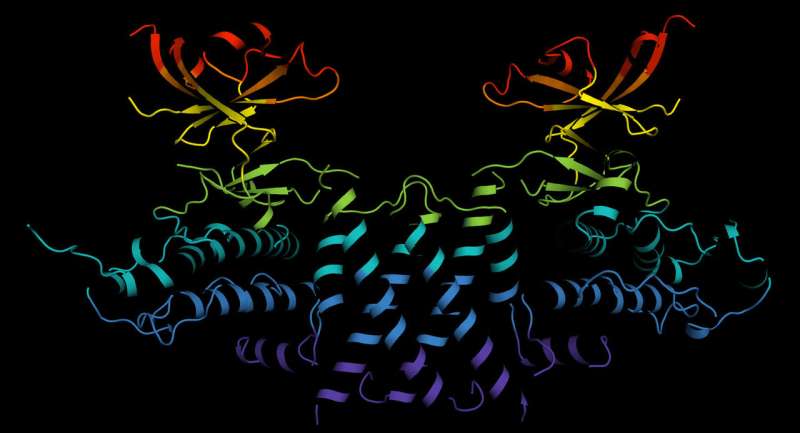3-D scaffold map to help the search for new cancer treatments

Melbourne researchers have produced the first three-dimensional (3-D) map of a molecular 'scaffold' called SgK223, known to play a critical role in the development and spread of aggressive breast, colon and pancreatic cancers.
Armed with the map, the research team is looking at ways of targeting parts of the scaffold molecule critical for its function. They hope the research will lead to novel strategies to target cancer.
The research was the result of a long-standing collaboration between Walter and Eliza Hall Institute researchers Dr Onisha Patel and Dr Isabelle Lucet and Monash University's Biomedicine Research Institute researcher Professor Roger Daly, with important inputs from Dr Michael Griffin at Bio21 Institute, University of Melbourne, and Dr Santosh Panjikar at the Australian Synchrotron. The research was published today in Nature Communications.
'Dead' enzyme mapped
Dr Lucet said SgK223 was a member of a family of proteins called pseudokinases and had been classified for a long time as a 'dead' enzyme.
"SgK223 doesn't have the measurable activity that we see with other types of enzymes, and this meant it was largely ignored. However in the past decade, we've come to understand that this 'dead enzyme' plays an active and important role in cell signalling," Dr Lucet said.
SgK223 is unique among pseudokinases because it acts as a molecular scaffold, facilitating the assembly of vital signalling molecules whose activities control the normal functions of a cell, such as cell shape and migration.
"Because of its primary role in facilitating the assembly of signalling molecules, high levels of SgK223 can jeopardise the normal functions of a cell and contribute to changes that lead to cancer," Dr Lucet said.
Unprecedented view
Dr Patel said facilities at the Australian Synchrotron enabled the team to get an unprecedented view of SgK223.
"Because molecular scaffolds such as SgK223 are structurally quite large, we focused on a critical part of the protein and produced a 3-D map using facilities at the Australian Synchrotron. With this map, we have now identified several regions of SgK223 that are essential for its ability to assemble signalling molecules," Dr Patel said.
"Solving the 3-D map of SgK223 is a critical step in the effort to discover how this molecular scaffold functions, and future research will verify whether targeting SgK223 could have an impact in treating cancers."
Impact on cancer
Professor Daly said the 3-D map would enable researchers to investigate how targeting SgK223 impacts cancer cells.
"With this 3-D map, we can now start to look at how inhibiting the function of SgK223 by targeting particular regions of the scaffold affects cell growth and spread in cancers where it is present at high levels, such as triple negative breast cancers," Professor Daly said.
World-class facilities at the Australian Synchrotron in Melbourne were instrumental in the discovery, Dr Lucet said. "The Australian Synchrotron is the only facility in the Southern Hemisphere that has the specialised technology required to provide us with detailed knowledge essential for seeing molecules at an atomic level. This is essential if we wish to discover and develop drugs that target and interfere with molecules that drive cancer and other diseases," Dr Lucet said.



















